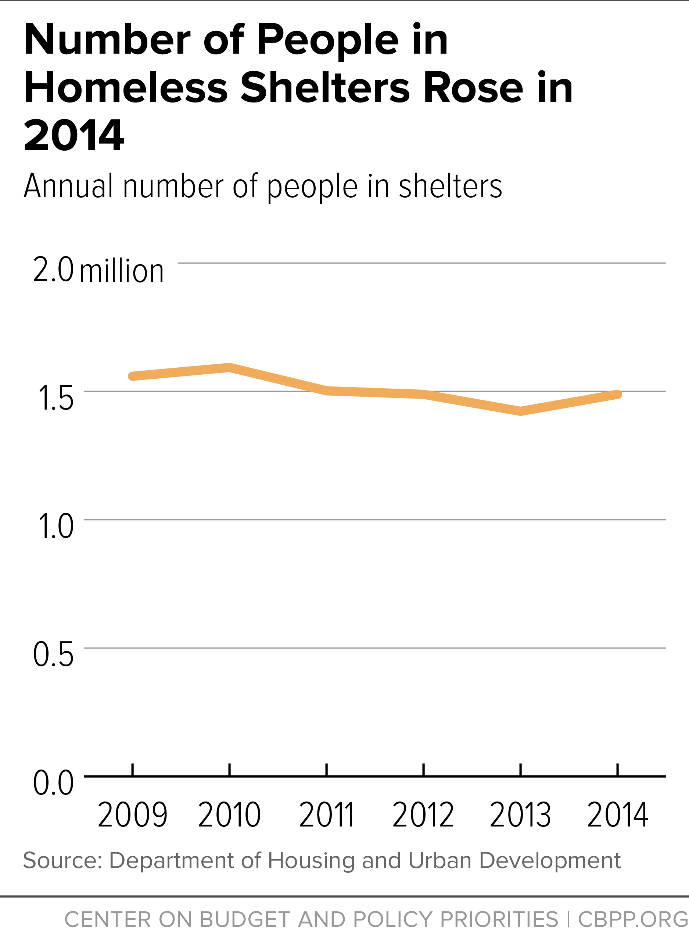BEYOND THE NUMBERS
The number of people who spent at least one night in a homeless shelter rose last year for the first time since 2010, the Department of Housing and Urban Development (HUD) reports. It’s sobering news this Thanksgiving holiday — and an important reminder for policymakers that helping low-income families find decent housing deserves high priority.
Nearly 1.5 million people spent at least one night in a shelter in 2014, about 66,000 more than in 2013, the report found (see graph). Most were single adults but over 500,000 were family members, including almost 315,000 children.
This report is distinct from the annual “point-in-time” estimate that HUD recently released. The latter, which counts people living in shelters or on the streets on a single night in January — and which fell slightly in 2015 — is a less reliable indicator of yearly changes since it is more sensitive to factors such as weather and local survey methodologies.
The new HUD figures are only the tip of the iceberg. Some 1.36 million school-age children lacked a home of their own during the 2013-2014 school year, an all-time high, including over 1 million children whose families are living doubled up with other families or friends, in hotels and motels, or on the streets. Doubling up with other families can be more problematic than it might seem; it can place children at risk for physical and sexual abuse as well as severe health problems, as Kathryn Edin and Luke Schaefer documented in their book $2 a Day.
The new data are particularly troubling because policymakers have made important progress against homelessness in the wake of the Great Recession, partly by better targeting rental assistance. They achieved impressive reductions in homelessness among veterans, for instance, by funding nearly 80,000 Housing Choice Vouchers for homeless veterans since 2008.
Moreover, a major study released this summer shows that Housing Choice Vouchers are the most effective tool to reduce homelessness among families with children.
Unfortunately, “sequestration” cuts enacted in 2013 eliminated some 100,000 Housing Choice Vouchers and only about one-third of them have been restored; austere budget caps have made it difficult for Congress to restore more. The recent budget agreement raises these caps, but a 2016 housing funding bill that the Senate released last week uses none of these additional funds for rental assistance.
Regardless of whether last year’s rise in homelessness continues beyond 2014, it should warn policymakers that failing to restore vouchers and invest in rental assistance can have real, negative effects on families and children.

